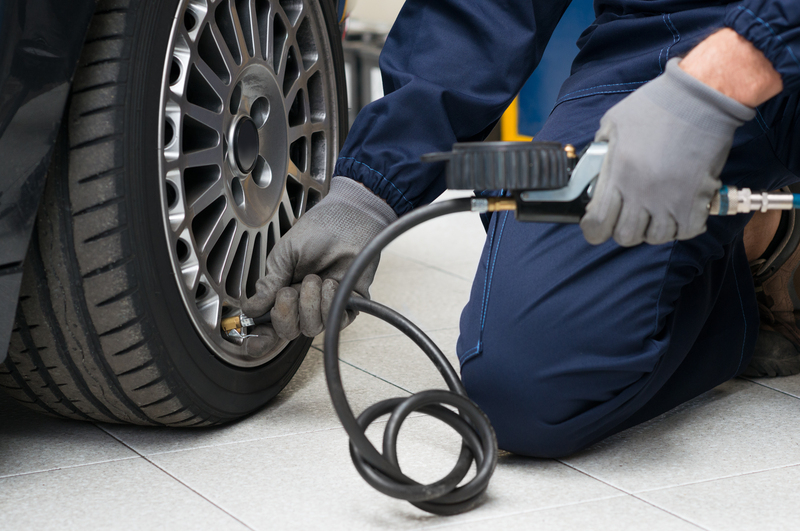How Professional Movers Protect Your Piano's Integrity
Posted on 04/06/2025
How Professional Movers Protect Your Piano's Integrity
Moving a piano is not just about strength--it's about expertise, care, and precision. Pianos are more than mere musical instruments; they are intricate masterpieces of engineering and emotional value. Ensuring their safe relocation is paramount, and that's precisely where professional piano movers come in. This comprehensive guide explores the various ways experienced movers safeguard your piano's integrity during a move, highlighting best practices, specialized equipment, and the importance of expert handling.

Understanding Piano Vulnerability: Why Expertise Matters
Pianos, whether upright or grand, feature complex mechanisms and are surprisingly delicate despite their heavyweight. A well-maintained piano can become a family heirloom, retaining its sound quality for generations. However, a single mishap during the moving process can lead to costly and sometimes irreversible damage.
- Over 10,000 moving parts: From strings and hammers to pedals and keys, every component requires gentle handling.
- Susceptible to humidity and temperature shifts: Sensitive wood and finishes can warp, crack, or lose their sheen if not protected.
- Highly tuned instrument: Even minor shocks can disturb the fine tuning and overall sound quality.
- Size and weight variances: Ranging from 300 lbs (small uprights) to over 1,400 lbs (concert grands), improper handling can cause severe injuries or property damage.
With so much at stake, protecting your piano's integrity requires more than just manpower; it demands a proven methodology perfected by professional movers.
The Essential Steps Movers Take to Safeguard Your Piano
1. Initial Assessment and Planning
The first task in professional piano moving is a thorough assessment. Movers will:
- Examine the piano's type, age, and condition: Every piano is unique. Movers assess which parts need special attention and if any previous repair work impacts the moving method.
- Survey the moving environment: Narrow doorways, tight staircases, or multiple floors? Professionals plot the safest route, minimizing movement risks.
- Plan for disassembly: For grand pianos, specific parts like the legs, pedals, and lyre may need removal. Accurate planning ensures these parts are handled separately and securely.
2. Specialized Packing Materials and Supplies
Proper packing is critical to maintaining your piano's structural and acoustic integrity. Experienced movers use:
- Heavy-duty moving blankets and pads: These shield the wood, finish, and components from scratches, dings, and dirt.
- Custom piano boards and skids: Specially designed for safety and stability, these are essential for grand piano moves.
- Plastic wrap and corner protectors: Guard delicate edges and prevent moisture or dust intrusion during transit.
- Professional-grade straps: Secure the instrument tightly to prevent any sudden shifts.
- High-quality crates and boxes: For detached components or upright pianos traveling long distances, custom crating offers increased security.
The meticulous application of these materials differentiates professionals from amateur movers and is vital for protecting your piano's finish and internal components.
3. Advanced Moving Equipment
Beyond packing, professional piano movers employ specialized equipment to ensure both the safety of your instrument and everyone involved. These may include:
- Piano dollies: Robust, velvet-lined platforms designed to support even the heaviest pianos smoothly over floors without causing scratches or structural strain.
- Stair-climbing apparatus: Powered lifts or track systems to safely maneuver pianos up or down staircases, minimizing risk to the instrument and surrounding walls.
- Ramps and liftgates: Essential for loading pianos into moving trucks without jarring impacts.
- Custom ramps: Constructed for unique home layouts to overcome steps or entryway challenges.
Their access to and expertise with this equipment is crucial for maintaining the integrity of your piano during every phase of relocation.
4. Safe Disassembly and Reassembly
Grand pianos, in particular, require partial disassembly. Professionals:
- Carefully detach legs, pedals, and music stands: Using appropriate tools and ensuring original fastenings are preserved.
- Label all components: For easy, accurate reassembly at the destination.
- Protect each part individually: All detached parts are wrapped and packed with meticulous care.
- Reassembly upon arrival: Movers reconstruct the piano following manufacturer specifications, double-checking all connections and placements.
This precise process not only protects your piano's structure but also makes post-move tuning and maintenance more manageable.
5. Temperature and Environment Control
Pianos are exceptionally sensitive to environmental changes. Professional movers take steps to:
- Minimize exposure to temperature and humidity extremes: Rapid shifts can damage tuning, wood, and felt components.
- Use climate-controlled vehicles: For long-distance or especially valuable pianos, a steady environment is maintained throughout the move.
- Avoid leaving pianos exposed outdoors: Even brief periods in the open can impact the instrument's quality.
By controlling these factors, movers help preserve the sound and structural integrity of your piano during relocation.
The Value of Insurance and Liability Coverage
Accidents, though rare with professionals, can happen. That's why reputable piano movers offer comprehensive insurance, including:
- Basic coverage: Typically included as part of the moving service, covers minor damage.
- Full-value protection: Ensures repair or replacement up to the instrument's total value.
- Special instrument insurance: Ideal for antique, highly valuable, or concert-grade pianos.
This critical step safeguards your investment and provides peace of mind--a vital aspect of piano moving integrity.
Key Reasons to Choose Professional Piano Movers
The difference between a standard moving company and a dedicated piano moving specialist is substantial. Here are some compelling reasons to rely on professionals:
- Experience: Years of handling different piano types, brands, and situations ensure minimal risk.
- Proper equipment and techniques: From tools to transport, everything is tailored for maximum protection.
- Efficiency: Faster, safer, and more organized moves reduce downtime and stress for owners.
- Expert advice: Including post-move setup and tuning recommendations.
- Accountability: Complete documentation, clear communication, and liability coverage throughout the process.
Homeowner Tips: Preparing Your Piano for a Professional Move
While professional movers handle the heavy lifting, there are several preparation steps you can take to facilitate a smooth and successful relocation:
- Clear the path: Remove rugs, furniture, or other obstacles from the piano's route to the exit.
- Close and lock the keyboard lid: Prevent accidental key or mechanism damage.
- Photograph the piano: Document existing condition as a reference.
- Communicate any concerns: Inform movers of previous repairs or unique features.
- Consider post-move tuning: Schedule tuning after your piano acclimates to its new environment.
Common Myths About Moving Pianos
-
Myth 1: Any mover can handle a piano.
Reality: Without specialized knowledge, standard movers frequently cause preventable damage. -
Myth 2: Pianos are too heavy to get damaged.
Reality: Weight doesn't protect against impacts, scratches, or structural stress. -
Myth 3: DIY piano moving saves money.
Reality: Inexperience often leads to repairs that far outweigh the cost of professional assistance.
The Cost of Piano Integrity Loss: Risks of Unprofessional Moves
- Scratched or cracked finishes - Diminishes aesthetic and resale value.
- Warped or broken soundboards - Requires expensive repairs or even replacement.
- Derailed pedals, stuck keys, or damaged action mechanisms - Renders the piano unplayable and harder to fix.
- Loss of tuning and tonal quality - Results in diminished musical experience and further repair costs.
These risks underscore why preserving your piano's integrity must be entrusted to certified piano movers with a track record of success.

Post-Move Recommendations for Piano Owners
Once your piano arrives safely at its new location, the work isn't quite finished. Here are essential post-move tips to maintain your instrument's integrity and value:
- Allow for acclimatization: Wait at least a week before tuning to let the piano adjust to new humidity and temperature.
- Inspect for damages: Review your pre-move photos and address any concerns with your mover promptly.
- Schedule professional tuning and maintenance: Even with the greatest care, slight adjustments will restore optimal sound.
- Monitor environmental conditions: Use humidifiers in dry climates or dehumidifiers in damp zones to preserve wood and action components.
Conclusion: Assurance Through Professionalism
Entrusting your piano move to professional movers is not just a wise decision--it's an investment in safeguarding your piano's sound, beauty, and longevity. Through careful planning, the use of specialized equipment, expert packaging techniques, and a deep understanding of piano anatomy, these professionals ensure your beloved instrument arrives unscathed and ready to fill your space with music once again.
If you're seeking the highest standard of care and want to protect your piano's integrity during a move, always consult with certified, experienced piano movers. It's the first note in maintaining a harmonious future for your cherished instrument.
```


